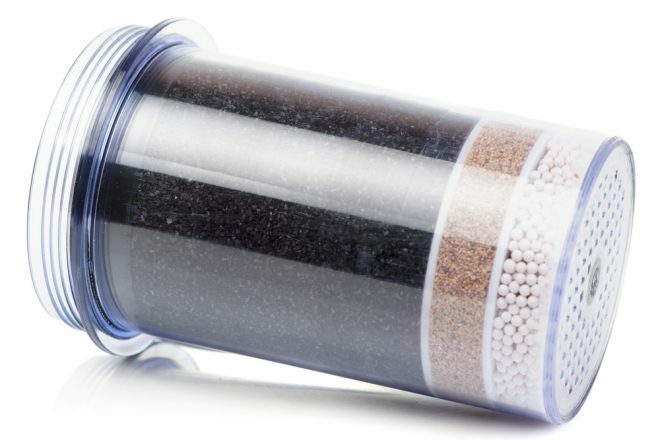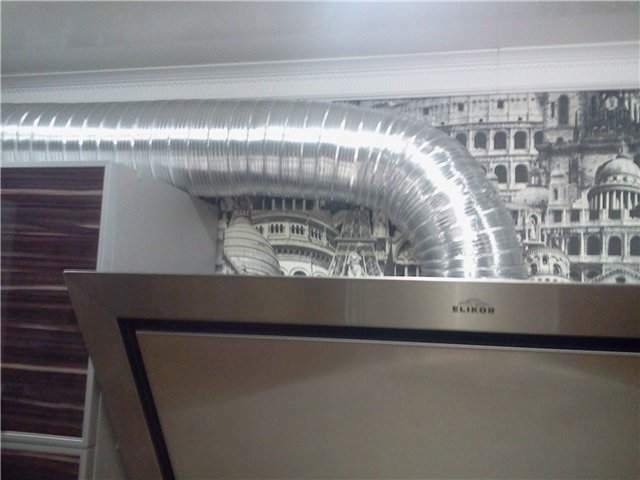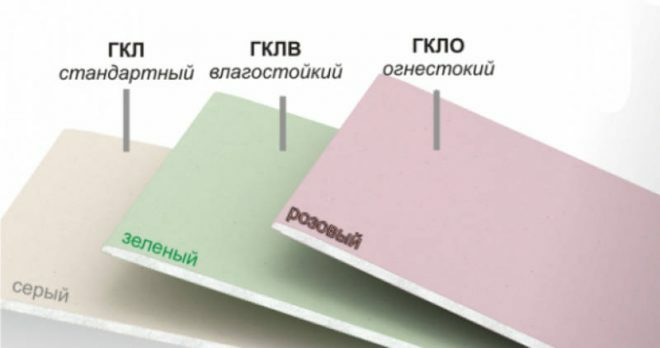The kitchen floor is a real gray cardinal in the design world. It seems that it is not the most important object in the room, but if you choose it incorrectly, you will get an ugly, uncomfortable and even unsafe interior. In order to determine the question of which floor is better to do in the kitchen, many nuances should be taken into account.
This is the resistance of the material to moisture, abrasion, mechanical shock, ease of maintenance, sensation for the feet (warm or cold), the need for additional work to prepare the surface for laying (leveling the floor, insulation). All these properties will determine how long the floor in the kitchen will last, its appearance in 5 - 10 years. Plus to this - compliance with the design of the kitchen, the headset and the total cost of repairs.

Attention! Earned on our website kitchen designer. You can get acquainted with it and design your dream kitchen for free! May also come in handy wardrobes designer.
About screed and insulation
Before making the floor in the kitchen, already at the beginning of the renovation, you need to imagine what materials will be used. The height of the screed depends on what the floor is covered with, whether insulation is needed. Most likely, insulation will be needed if the floor is made of tiles, since this is the coldest material. Laminate, linoleum, parquet - warmer. When calculating the cost of work and materials, you need to take into account the preparatory stage. Sometimes this significantly increases the cost of repairs, people think about a different floor option.
If you plan to lay laminate flooring, plaster is the best choice for screed floors in the kitchen. This will make the kitchen floor warmer and reduce the water permeability of the materials. Any screed is suitable under the tile, even the usual cement one. For self-leveling floors, a screed is not needed at all, they will form a flat horizontal surface even without it. What is better to lay on the floor when laying a specific material in your case - you need to consult with specialists.
The height of the screed is reduced if they are going to install underfloor heating in the kitchen. Then the overall level of the floor will not rise significantly and will not affect the overall perception of the room. Laminate and tiles go well with the warm floor. Any type of heating system is suitable for this. You cannot put insulation under a tree, parquet.

Image taken from https://www.youtube.com/watch? v = P_7v6Y4GcgY
It is necessary to accurately calculate the thickness of the screed for combined floors. To do this, you should immediately know the thickness of each final coating, so that the floor as a whole turns out to be of the same level. Be sure to think about how to level the floor in the kitchen if there is laminate or vinyl tiles on top.
Types of flooring for the kitchen
If earlier only tiles and linoleum were used for the floor, now the list of materials suitable for laying on the floor has expanded significantly. This became possible due to the fact that new technologies for the manufacture of materials make them more resistant to negative factors.
If earlier wood in the kitchen was laid on the floor in exceptional cases, now you can achieve the effect of wooden floors using imitation: laminate, linoleum, PVC tiles, porcelain stoneware. What is better to lay on the floor in this case depends on personal preference.
Some types of coatings "came" to the kitchen from industrial premises. The self-leveling concrete floor, due to its long service life, interesting design, has proven itself well and will not surprise anyone in the kitchen. And his appearance can be the most unusual: from volumetric images, 3D photographs to multi-colored designs with a color gradient.

Image taken from https://www.youtube.com/watch? v = npVA5XGcChM
So there are more types of floor coverings, which means that the decision of what is better to lay on the floor in the kitchen should be more thoughtful and balanced.
Pros and cons of materials
You need to imagine the properties of different materials in order to choose the right floor covering option for your kitchen. Sometimes one drawback outweighs all the advantages and forces you to abandon the material. Determine for yourself what is of paramount importance and what is not important, then choose the best option for the floor for the kitchen.
Laminate
Warm, beautiful material that requires a rather careful and attentive attitude of the owners. Ordinary does not tolerate puddles (but there is also moisture resistant), it can change color from contact with dyes. The biggest danger, if the kitchen floor is made of laminate, is its deformation when flooded. In this case, it will be difficult to restore the kitchen floor. You need to be careful about cleaning the room - give up aggressive and abrasive detergents, squeeze the rags well.

The advantages will be a wide choice of laminate flooring, ease of installation, pleasant sensations for the feet, good noise and heat insulation. The lamellas are made monochromatic or they are drawn under a tree or stone. This allows you to give a beautiful look to the kitchen with a small investment.
Laminate with marble, ceramics or metal looks very interesting and unusual. Designers do not stop experimenting with textures and colors, they know how to surprise with the help of familiar materials. You can look at the illustrations on the Internet to make it easier to decide what kind of floors to make in your apartment.
If the choice fell on a laminate, it is necessary to take moisture-resistant products. They are better protected from water ingress and deformation.

Image taken from https://www.youtube.com/watch? v = bM9p3xzEjUQ
Tile
Absolutely resistant to water, dyes, easy to clean with any chemical means. The variety is also sufficient: tiles can be of different colors, sizes and shapes, monochromatic, with an ornament or an arbitrary pattern. It does not wear off, durable. Does not change when exposed to the rays of the sun. Therefore, for a long time, making a tile flooring was the only and irreplaceable option for the kitchen.
The choice of tiles is increasing all the time: there are products of unusual shapes for mosaics on the market, with imitation of wood and even leather.
Thinking about which floor is better for the kitchen, you need to take into account the negative aspects of the tile: laying is expensive. When large heavy objects fall, cracks and chips are often formed on the tiles. You will not face this problem if you choose porcelain stoneware as your tile. It is very durable, but it also costs more than conventional ceramics.

You need to consider how to deal with the cold and slippery material:
- Use an anti-slip coating or choose materials with a rough surface.
- Walk in shoes or install a floor heating system under the tiles.
Special attention should be paid to PVC tiles. It is a practical kitchen floor covering. Quartz sand and polyvinyl chloride are added to it. It can be installed with glue or tiles with locks. Pre-level the floor surface. It is durable, but at the same time warmer, pleasant for the feet, withstands moisture well, mechanical shock, falling of sharp objects.

Linoleum
Inexpensive, beautiful, easy to lay on your own. Large selection of colors and patterns. There are products for wood, parquet, stone, tiles. However, imitation in aesthetics is far enough from the original, it is unlikely that anyone will be able to mislead. Falling objects will not break or deform on the floor. Linoleum makes good kitchen floors, warm to the feet, and easy to clean. The coating does not deteriorate at high humidity in the room, ingress of water drops.

And now what will not please you if you chose linoleum floor: Heavy furniture leaves dents, and sharp objects can leave marks in the form of scratches, cuts. This is a budget option that does not contribute to the luxury of a kitchen. There may be traces of the soles of the type of black stripes. Cheap linoleum can contain substances harmful to health, which will somehow get into the air.
Modern types of linoleum with maximum environmental friendliness are artoleum, marmoleum. They cost a little more, but they certainly won't harm the body. May be a suitable answer to the question of what is best to lay on the floor with a small budget.
Before laying, the floor surface must be carefully leveled. Any unevenness is immediately felt by the feet through the coating; in places of constant friction, the linoleum is quickly wiped and damaged.
The choice of colors is large: these are solid gray, brown, blue colors, imitation of natural materials. You need to pay attention to the quality of linoleum: there are soft products that are less resistant to mechanical damage, and harder. They are designed for heavy loads and retain their original appearance longer.

Self-leveling floor
This is a liquid mass, which itself evens out and occupies the entire horizontal surface, solidifies. Very practical floor. It does not deteriorate from cutting and falling objects, heels, moving furniture, water, oil, coloring elements, so it will last for more than a dozen years.

Image taken from https://www.youtube.com/watch? v = npVA5XGcChM
Is it always necessary - everyone decides for himself. After all, removing such a floor is much more difficult than putting it down. Experienced specialists are involved in styling so as not to spoil the expensive material. Kitchen floor ideas are an unlimited flight of imagination.
The unpleasant thing is that the floor is cold enough (although it is warmer than the tiles), the top layer can lose its original appearance over time. Small scratches spoil it. There are a lot of such floors.
Increasingly, concrete flooring options are being made in kitchens, since, in addition to the moderate cost and high practicality, they can be made interesting thanks to acid staining. So they become similar to stone, tiles, attract attention with an unusual texture.

Image taken from https://www.youtube.com/watch? v = npVA5XGcChM
Parquet board
Parquet as a covering in the kitchen looks expensive, but quickly deteriorates from water. If you do not wipe off spilled water in time, and even worse - wine, juice, the floor can deform, paint. The invested work and money will not be justified. Also, the floor wears out over time. Editing requires a certain skill. A floor made of wood is fire hazardous; under the influence of moisture, mold and microbes can develop in it.

Image taken from https://www.youtube.com/watch? v = G-7gckxxnEk
The parquet board has a comfortable temperature for the feet, a kind of natural wood. However, the presence of joints between the boards is always a danger of water penetrating under the floor. By absorbing moisture, the parquet floor changes its size, "swells". Adherents of such a floor will have to clearly monitor the temperature in the room, humidity, and immediately remove drops and puddles. For additional protection from water, the boards are cycled with varnish or they immediately acquire a thermal tree. It is more expensive, but withstands the test of water better. It is easy to get rid of surface defects - make periodic cosmetic repairs.
Wood elements with rounded edges come into fashion. They can be laid like tiles or mosaics, and complex unusual ornaments are laid out of them. An alternative to parquet is flat boards made of natural wood, fitted close to each other. The tree can not only swell, but also dry out at low indoor temperatures. Easily absorbs paint, so it is difficult to remove stains.
If you want to have wood floors in your kitchen and not worry about flooding or leaking faucets, you can opt for cork flooring. Especially if you cover it with a moisture-proof varnish on top. Cork is hypoallergenic, environmentally friendly, warm to the touch, easily tolerates regular wet cleaning and contact with water. Further care depends on what you cover the kitchen floor with.

Combination of materials
It is not advised to combine materials in small kitchens. Because of this, space is fragmented. The exception is when one type of material is placed under the furniture - durable and inexpensive, and in an open space - more comfortable for the legs and beautiful.
The combined floor perfectly fulfills the function of zoning in combined large rooms. It also helps to make the most of the positive qualities of different materials, to minimize their disadvantages. The recreation area and the cooking area are designed differently. Modern kitchen floors are most often made from tiles and laminate.
If a decision is made to combine materials for the floor, you need to know the level of the screed, where to lay the warm floor, think over the design of the joints. Sloppy joints can ruin the overall impression of the kitchen and the floor, in particular.

Image taken from https://www.youtube.com/watch? v = eFwvdRqqm0Q
Selection Tips
Here are some practical tips to help you avoid the most common mistakes when renovating your kitchen floor:
- Whatever material you choose, you do not need to take the cheapest goods. It is better to buy a quality product from well-known manufacturers.
- It is necessary to entrust the laying of the floor to good specialists, otherwise even expensive material can be damaged, and repairs will be a waste of money and time.
- When it comes to tiles, parquet boards, linoleum, laminate, it is better to take the material with a margin, so that, if necessary, there is something to replace the damaged floor elements.
- White and dark solid flooring is extremely difficult to maintain. On such a surface, stains, dust, small debris are clearly visible. The same goes for grouting if the floor is tiled. It quickly loses its appearance if the color is not thought out before repair. The grouting area can be reduced by choosing large tiles or rectified tiles (fit close to each other with practically no seams). The floor can be treated with ready-to-use detergents.
Of course, it is better to put a practical covering on the floor. The most durable and unproblematic flooring materials in the kitchen include tiles, especially porcelain stoneware, vinyl, quartz vinyl, concrete or self-leveling floors, moisture-resistant laminate, marmoleum, cork wood.

Sometimes the interior requires the presence of wooden floors. Experts say that it is better to lay a thermal tree or a high-quality imitation on the floor - laminate, porcelain stoneware protected from moisture, vinyl imitation wood tiles.
In general, be guided by your taste, which floor to choose. Consider the frequency of cooking and the number of members of your family, the presence of small children, pets, the habits of walking barefoot or in shoes, the amount that you are willing to invest in renovating the floor.


